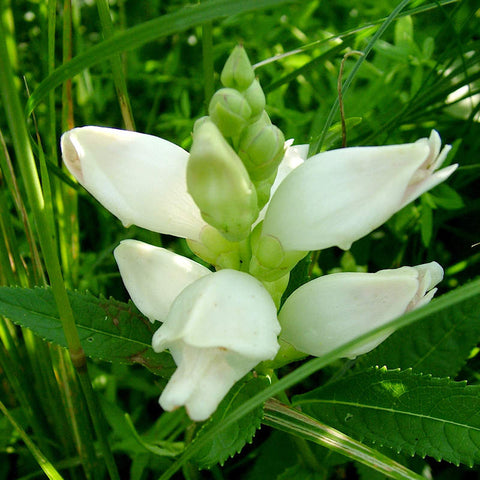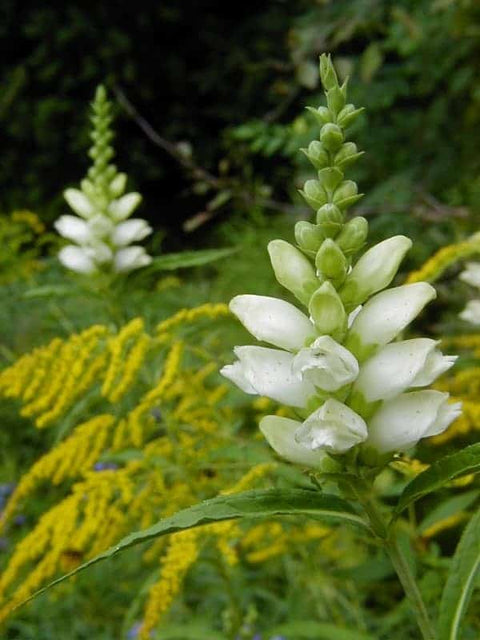

Chelone Turtlehead Plant: A Unique Wildflower
Turtlehead (Chelone) is a captivating perennial plant that stands out for its shape and vibrant colors. Native to North America, this wildflower lives in wetland areas, along riverbanks, and in moist places. It's known and gained the name for looking like a turtle's head.
Ecological Role
Turtlehead is an essential plant for local ecosystems, particularly for pollinators. The tubular flowers are an excellent nectar source for hummingbirds, bees, and butterflies. Hummingbirds are especially attracted to the tubular shape and vibrant colors, while bumblebees and other native bees often gather nectar from the flowers. Turtlehead also supports a variety of wildlife by providing shelter and food for insects and small animals that rely on wetland environments.
Growing Chelone Turtlehead
Turtlehead is relatively easy to grow in the right conditions, but it requires moist, well-drained soil and plenty of sunlight to partial shade. It is often found in wet woodland habitats in the wild, so gardeners looking to replicate its natural growing conditions should aim for a damp, shaded, or partly shaded spot.
The soil must be kept moist but not soggy to grow a turtlehead. This plant thrives in areas with regular water and can tolerate conditions where other plants might struggle, such as along the edges of streams or ponds. It can also accept various soil types, from clay to loamy soils, as long as the soil remains consistently moist.
Seeds, root cuttings, or division can propagate Turtlehead. If starting from seeds, it's best to plant them in the fall to allow them to undergo the cold stratification process necessary for germination. Alternatively, you can divide mature plants in early spring or late fall to propagate them.
Once established, Turtlehead requires minimal care. Pets and diseases usually don't harm them but can occasionally attract aphids or slugs. Regular deadheading of spent flowers can encourage more blooms and improve the plant's overall appearance.
Medicinal Uses of Chelone Turtlehead Plants
Turtlehead has a long history of using it for medicine, mostly among Native American tribes. Many parts of the plant, including the roots and leaves, were used for medicine. Historically, Turtlehead was used to treat digestive issues, skin conditions, and respiratory problems. The plant was believed to have mild laxative and astringent properties, with its roots being employed in herbal remedies to treat constipation and indigestion and even to relieve symptoms of colds.
The plant also has a long-standing reputation in folk medicine for its anti-inflammatory properties. It was used in poultices to treat wounds, rashes, and irritations. Some cultures used it to treat sore throats, while others applied it as an external wash to relieve itching.
Conservation and Habitat
Turtlehead is not considered endangered, but it does face some environmental pressures, especially in areas where wetland habitats are being degraded or lost. The plant relies on moist habitats and can be threatened by the draining of wetlands, pollution, and urban development. In some areas, conservation efforts to restore wetland ecosystems and promote the use of native plants in landscaping are helping to support the continued existence of Turtlehead in the wild.
As part of a native plant garden, Turtlehead can be a practical choice for wetland restoration or planting in rain gardens designed to manage stormwater runoff. The plant helps improve water quality by slowing erosion and filtering water while also providing habitat for wildlife.
Ships As:
Rooted Plug
Zone:
3-8
Exposure:
Sun & Shade
Native:
Yes



